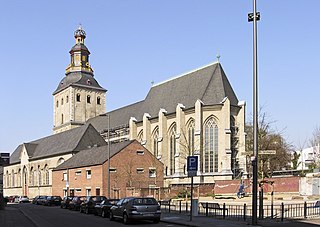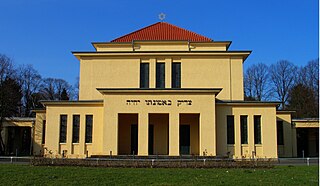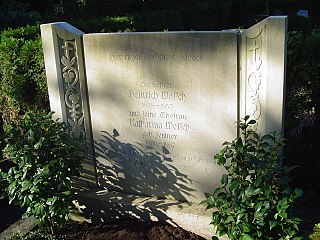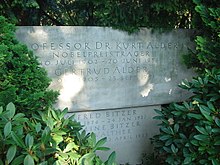
Cologne is the largest city of the German western state of North Rhine-Westphalia (NRW) and the fourth-most populous city of Germany with 1.1 million inhabitants in the city proper and 3.6 million people in the urban region. Centered on the left (west) bank of the Rhine, Cologne is about 35 km (22 mi) southeast of NRW's state capital Düsseldorf and 25 km (16 mi) northwest of Bonn, the former capital of West Germany.

The University of Cologne is a university in Cologne, Germany. It was established in the year 1388 and is one of the most prestigious and research intensive universities in Germany. It was the sixth university to be established in Central Europe. It closed in 1798 before being re-established in 1919. It is now one of the largest universities in Germany with more than 50,000 students. The University of Cologne is a member of the German U15 association of major research-intensive universities and was a university of excellence as part of the German Universities Excellence Initiative from 2012 to 2019. It is constantly ranked among top 20 German universities in the world rankings.

The Basilica church of St. Ursula is located in Cologne, North Rhine-Westphalia, Germany. It is built upon the ancient ruins of a Roman cemetery, where the 11,000 virgins associated with the legend of Saint Ursula are said to have been buried. The church has an impressive reliquary created from the bones of the former occupants of the cemetery. It is one of the twelve Romanesque churches of Cologne and was designated a Minor Basilica on 25 June 1920. While the nave and main tower are Romanesque, the choir has been rebuilt in the Gothic style.

RheinEnergieStadion, formerly Müngersdorfer Stadion or Müngersdorfer Stadium, is a German football stadium in Cologne. It was built on the site of the two previous Müngersdorfer stadiums. It is the home of the local Bundesliga team, 1. FC Köln. The stadium was one of five stadiums hosting both the 2005 FIFA Confederations Cup and 2006 FIFA World Cup, and hosted the 2020 UEFA Europa League Final behind closed doors. Local energy company RheinEnergie AG currently holds the naming rights to the stadium, hence it was known as the Stadion Köln for the final.

Lindenthal is a borough of the City of Cologne in Germany. It includes the quarters Braunsfeld, Junkersdorf, Klettenberg, Lindenthal, Lövenich, Müngersdorf, Sülz, Weiden and Widdersdorf. It has about 153,000 inhabitants and covers an area of 41.8 square kilometers.

The Cologne Ring is a semi-circular, some 6 km long urban boulevard in Innenstadt, Cologne and the city's busiest and most prominent street system. The Cologne Ring is a four lane street and part of Bundesstraße 9.

Colonia Claudia Ara Agrippinensium was the Roman colony in the Rhineland from which the city of Cologne, now in Germany, developed.

Innenstadt is the central borough (Stadtbezirk) of the City of Cologne in Germany.

The Protestant cemetery Bergisch Gladbach road in Mülheim district of Cologne existed since the beginning of the 17th century and is one of the oldest preserved cemeteries in Cologne, Germany. The cemetery is still in operation and used for burials.
Jüdischer Friedhof Köln-Mülheim is a Jewish cemetery in the former city of Mülheim am Rhein, which since 1914 has been incorporated into the district of Cologne, Germany. The cemetery was built in 1774.

Jüdischer Friedhof Deutz is a cemetery in Cologne, Germany. Founded in 1695, it is the oldest Jewish cemetery in the district of Cologne. Last burial took place during the Second World War in 1941.

Jüdischer Friedhof Köln-Bocklemünd is a cemetery in Cologne, Germany. A Jewish burial site since 1918, many of its tombstones are noted for their extravagant artistic designs.

Kalker Friedhof is an urban cemetery in Cologne, Germany in the district of Merheim. The cemetery was established in 1904.

Katholischer Friedhof Köln-Mülheim is a cemetery in Cologne, Germany. The oldest gravestone dates to 1841.

Mülheimer Friedhof is a cemetery in Cologne, Germany. It was established on 30 September 1904.

Südfriedhof is the German name for the South Cemetery in Cologne, Germany. With an area of over 61 hectares, it is the largest cemetery in Cologne.

Friedhof Trenkebergstraße is a cemetery in Cologne, Germany. The cemetery is 4,600 m2 and offers space for 790 graves. Furthermore, there are 16 graves in this cemetery for German victims of the Second World War.
Arsch huh, Zäng ussenander is the motto and name of a campaign against right-wing violence in Cologne, Germany. The colloquial slogan in the local dialect Kölsch literally means "Ass up, teeth apart", encouraging people to not look away but to stand up, speak out and take action against racism and injustice.
Annelise Löffler, also Anneliese was a German photographer.

The Jewish Cemetery Aachen is located in Aachen in North Rhine-Westphalia. It is on the corner of Lütticher Straße and Körnerstraße.

















